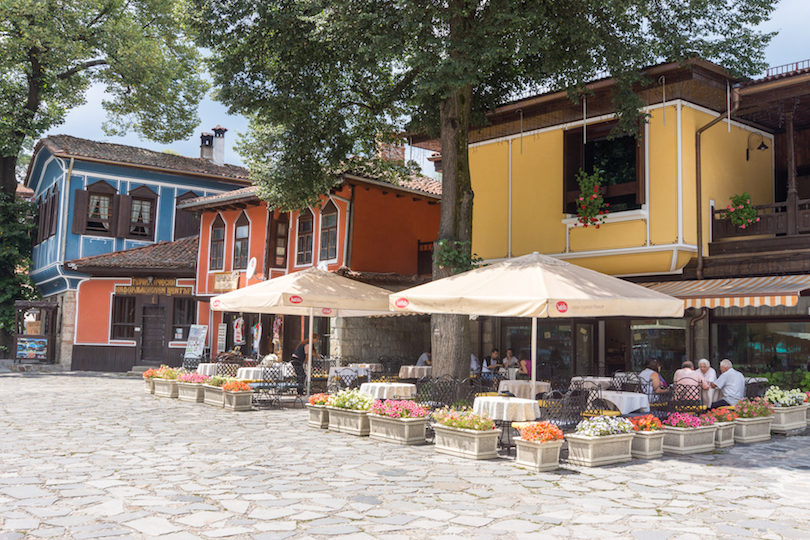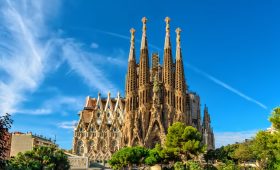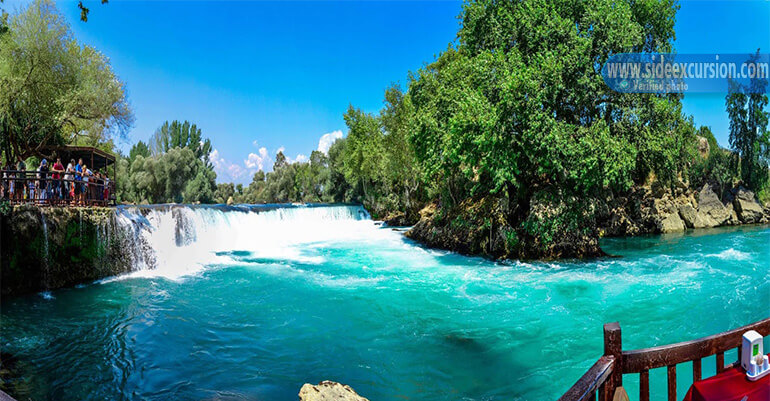What can you see in Bulgaria and the best travel itinerary? Close to the village of Krushuna, nested in a lush forested landscape among the many karst rock formations, are the Krushuna Falls. The tallest of the falls is 20 meters high, where the turquoise water then splits into smaller falls and cascades over hunks of limestone, forming gentle pools and curious curves in the rock. It is easy for visitors to reach the waterfalls and explore the surrounding area over bridges and steps. One pathway leads to a hidden cave where the source of the waterfall can be found – the spring is said have health benefits and is still a popular spot for locals from the nearby village.
Best Bulgaria Itinerary? The legendary City of the Tsars stands aloft on the edge of the rising foothills of Bulgaria’s northern mountains. Bisected by the S-shaped meanders of the Yantra River, the town’s setting is nothing short of breathtaking, with terraces of terracotta-coloured roofs looming over the waterways below. The pretty cobblestone lanes and half-timbered homes of this one’s old town are prime examples of what’s now known as the Tarnovo school, which developed as the Second Bulgarian Empire boomed in the Middle Ages.
Prep the salopettes and wax the skis, because Bansko is Bulgaria’s most prized winter sports resort. With countless expansions and new lift projects at its back, the dual ski fields of the Chalin Valog and Shiligarnika that make their home between the fir forests here have become some of the most lauded in all of Eastern Europe. And even if you won’t be hitting the 70 kilometers of groomed runs on offer, Bansko’s rugged setting in the Pirin ranges and wealth of luxury hotels, hedonistic bars, jazz joints, cross-country trails and Bulgarian tavernas is sure to hit the spot! Find extra info on Bulgaria Itinerary.
Perfectly-preserved Koprivshtitsa pops up from between the spruces and pines that cover the valleys of the Sredna Gora Mountains like a beautifully adorned gingerbread carving of a town. In fact, the whole settlement is a protected national monument, supposed to reflect and define the achievements of the Bulgarian National Revival movement in its wealth of painted facades, realist stone sculptures and shuttered homes. Visitors who head to the spot today can spy out honorific memorial exhibitions dedicated to heroes of the April Uprising of 1876, while other institutions chronicle the life and works of iconic revivalist writers and artists alike.
A good place to start is the country’s famous coastline. Bulgaria is known for its Black Sea coastline which has long stretches of sandy beaches dotted with hotels, traditional fishing villages, and historical sites. Tourists flock to the glitzier resorts of Sunny Beach and Golden Sands, but I personally believe the city beaches in Varna and Burgas are just as beautiful. Find additional info at here.



